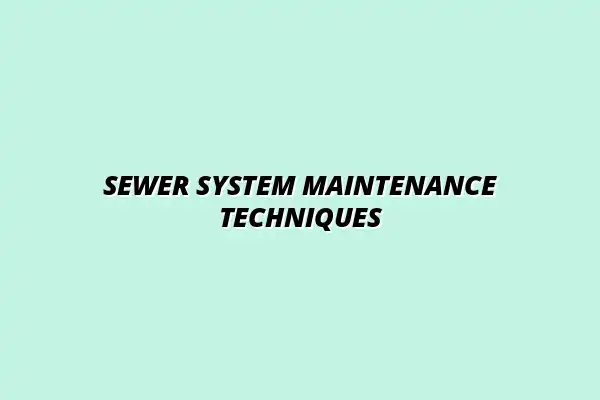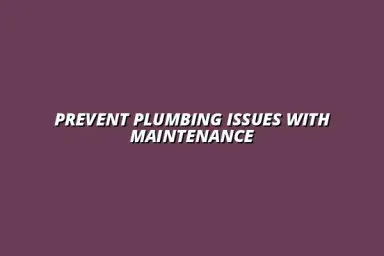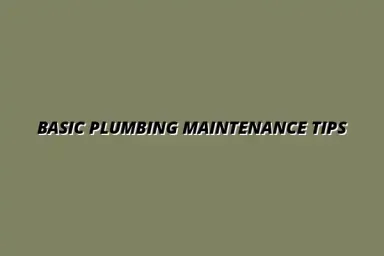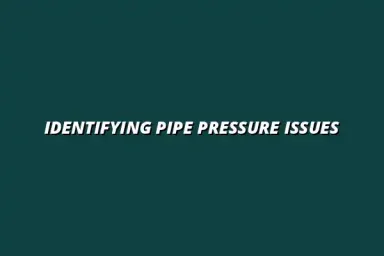Understanding Your Home’s Sewer System and Its Importance
Every home has a sewer system, which plays a crucial role in managing wastewater. Understanding how your sewer system works can help you avoid serious plumbing issues down the road. Not only does a well-functioning sewer system keep your home clean, but it also protects your health and the environment!
By knowing the basics, you can take better care of your home and save money on repairs. Let's explore the components and functions of a typical sewer system, and some common problems that can arise. For more information on maintaining your entire plumbing system efficiently, check out these tips on efficient plumbing system maintenance.
Overview of Home Sewer Systems
A home sewer system is made up of various parts that all work together to move wastewater away from your house. This system includes pipes, drains, vent stacks, and the main sewer line. Each component serves a specific purpose and contributes to the overall efficiency of the system.
- Pipes: These transport waste from fixtures to the main line. Regular maintenance of these pipes is crucial to prevent costly repairs later; learn more about preventative plumbing maintenance.
- Drains: Found in sinks, toilets, and showers, they collect wastewater.
- Vent stacks: Allow air to enter the system, preventing pressure build-up.
- Main sewer line: Carries waste away from your home to the municipal sewer or septic system.
Understanding these components helps homeowners recognize when something might be wrong. It's important to keep them in good working order to ensure your sewer system functions smoothly.
Components of a Typical Sewer System
The main components of your home’s sewer system include several key parts. Each one plays an essential role in ensuring waste is handled properly. Here’s a quick breakdown of the critical elements:
- Building drain: This collects wastewater from various fixtures.
- Sewage ejector pump: This is used if the sewage needs to be pumped upward.
- Cleanouts: These access points allow for easy cleaning and block removal.
- Septic tank (if applicable): Stores and treats wastewater before releasing it into the ground.
By familiarizing yourself with these parts, you’ll be better equipped to spot potential issues before they escalate into bigger problems. For example, understanding how to maintain your bathroom plumbing pipes can significantly reduce the risk of issues in your sewer system. Here are some tips on maintaining your bathroom plumbing.
How Sewer Systems Function
Your sewer system primarily works by using gravity to move waste away from your home. When you flush a toilet or drain water, waste enters the drain pipes and flows down to the main sewer line. From there, it either connects to a city sewer or goes to a septic tank for treatment.
This process highlights the need for proper installation and maintenance of your system to prevent clogs and backups. If everything is functioning as it should, you probably won’t think much about it until something goes wrong! If a sewer pipe backup occurs, knowing the next steps is crucial. Learn more about handling a sewer pipe backup.
Common Problems Associated with Sewer Systems
Even with the best maintenance, sewer systems can experience problems. Recognizing these common issues can help you address them quickly. By keeping an eye out for signs of trouble, you can save yourself a lot of stress and potential damage. Regular maintenance, including annual water heater inspections, can prevent many issues. Here are some tips for annual water heater inspections.
- Clogs: These can occur due to hair, grease, or foreign objects.
- Leaks: Pipes can wear down, leading to water escaping.
- Tree root intrusion: Roots can grow into pipes, causing blockages.
- Corrosion: Old pipes may degrade and need replacement.
Understandably, these problems can disrupt your daily life. However, being proactive and aware of these issues makes it easier to take action when needed. For essential plumbing maintenance advice to prevent future problems, visit this page for essential home plumbing maintenance.
Clogs and Blockages
Clogs are one of the most common issues homeowners face with their sewer systems. They can happen for various reasons, including the buildup of debris or even tree roots invading pipes. Knowing how to identify clogs early can save you from costly repairs.
- Signs of clogs: Slow-draining sinks, gurgling noises, or foul odors.
- Common causes: Hair, soap scum, grease, and food particles.
- Preventative measures: Regular cleaning and avoiding flushing non-biodegradable items.
By staying vigilant, you can often prevent small clogs from turning into major blockages that require extensive intervention!
Leaks and Pipe Damage
Leaking pipes can lead to significant issues if not addressed promptly. Water escaping from pipes can cause mold, structural damage, and even increase your water bill. It's essential to check for signs of leaks regularly.
- Common leak signs: Water stains, increased humidity, and unexpected increases in water bills.
- Causes of pipe damage: Age, pressure changes, and ground movement.
- Repair options: Patching, lining, or total pipe replacement.
Being aware of these potential issues can help you stay ahead of repairs and ensure your sewer system remains in good condition! If you're in the Billesley, Birmingham area and need plumbing help, check out this local plumber.
Addressing Common Questions About Sewer Maintenance
When it comes to maintaining your home’s sewer system, it's normal to have questions! Understanding the ins and outs of sewer maintenance can save you time and money in the long run. In this section, I’ll cover some frequently asked questions and important considerations that can help you take better care of your sewer system.
FAQs on Sewer System Maintenance
One of the most common questions homeowners ask is, *How often should I have my sewer system inspected?* The answer is generally every 1 to 2 years, but this can vary based on several factors, including the age of your system and your location. Regular inspections can help catch potential problems before they escalate into costly repairs.
Another important query is, *What are the signs of a failing sewer system?* Being aware of these signs can help you address issues early on. Look out for:
- Unpleasant odors around your property
- Slow draining sinks or tubs
- Water pooling in your yard
- Frequent backups in your plumbing
Cost Considerations for Sewer Maintenance
Let's talk about costs! Understanding the financial aspect of sewer maintenance is key in planning your budget. The cost of professional services can range widely, typically falling between $100 to $300 for inspections, while cleaning services may cost anywhere from $200 to $500 depending on the severity of the job.
If you’re interested in DIY maintenance, budgeting for tools and supplies is also essential. Here are some common items you might consider:
- Plumbing snake: around $10 to $50
- Baking soda and vinegar: a few dollars each
- Protective gloves and masks: $5 to $20
- Drain cleaner: $5 to $25
Implementing an Effective Long-Term Maintenance Plan
Creating a long-term maintenance plan for your sewer system can help ensure its longevity and performance. A good plan includes regular inspections, cleaning, and record-keeping to track what’s been done. By incorporating these elements, you can alleviate worries about sudden plumbing issues in the future!
Creating a Maintenance Schedule for Your Sewer System
One effective way to keep on top of sewer maintenance is to establish a regular maintenance schedule. This might include scheduling inspections every 1 to 2 years and routine cleaning as needed. Consider setting reminders so you don’t let it slip through the cracks!
Incorporating video inspections can also greatly enhance your routine. They allow professionals to assess the condition of your pipes without invasive methods. This way, you can:
- Identify potential problems early
- Document the condition of your system
- Make informed decisions about repairs
Conclusion and Recommended Next Steps
Taking action on your sewer system maintenance doesn’t have to be overwhelming! By understanding the importance of inspections, being aware of potential costs, and creating a maintenance schedule, you’ll be well on your way to ensuring your sewer system runs smoothly.
For those eager to learn more, there are plenty of resources available! Consider checking out local plumbing guides or online tutorials that can provide further information on caring for your sewer system. Remember, proactive maintenance is key to avoiding costly repairs down the line. For more information, visit our page on preventative plumbing maintenance.

 Kiran Almasi
Kiran Almasi

